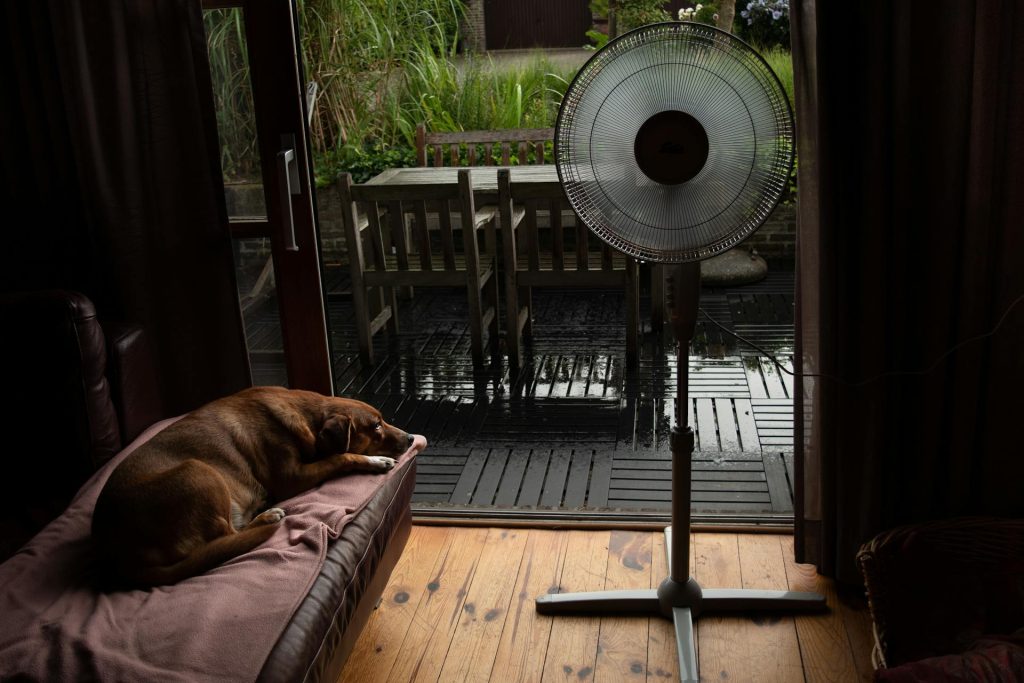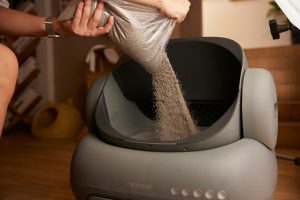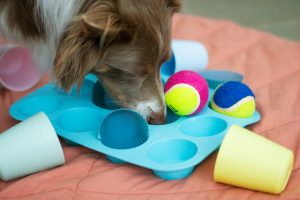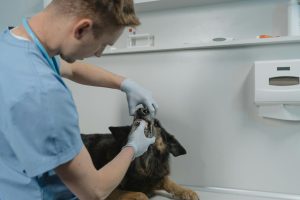
15 Creative Ways to Keep Pets Cool in a Small Apartment (All Summer Long)
When summer temperatures soar, apartment living with pets can feel like a sweltering challenge. With limited space, no backyard, and sometimes no AC, it’s up to pet parents to get creative. But keeping pets cool in a small apartment doesn’t have to mean blasting the fan 24/7 or freezing your electric bill. There are smart, renter-friendly, and surprisingly easy ways to help your furry companions stay comfortable and safe—even during the hottest days of the year. These 15 expert-approved strategies will help you cool things down while keeping your home pet-friendly and stylish.
1. Set Up a Cool Rest Zone with Tile or Linoleum
Dogs and cats naturally seek out cool surfaces when they overheat. If your apartment has tile, linoleum, or hardwood, place a cozy towel or bed in that area to encourage them to nap there. You can even use a portable yoga mat or kitchen mat in shaded spots if you have wall-to-wall carpet.
Avoid placing their beds in direct sunlight or next to heat-producing appliances. A well-positioned cooling spot gives them a go-to refuge when the temperature spikes.
2. Use a Cooling Mat or Frozen Towel
Pet cooling mats are made of gel or water-filled materials that stay cool for hours—no freezer needed. Simply place one on your pet’s favorite lounging spot for instant relief. If you don’t have one, try freezing a damp towel and laying it flat on the floor. Many pets will happily curl up on top.
This is a great hack for apartments with no AC, giving pets a cool surface without running extra electronics.
3. Block Direct Sunlight with Curtains or Reflective Film
Even a modest apartment can trap heat fast when direct sun pours in all day. Install blackout curtains or reflective window film to reduce heat buildup in your living space. This simple change can drop indoor temps by several degrees—something your pets will thank you for.
Be sure to leave a shaded area open so your pet can look out the window if they like to sunbathe—just with a safer temp under paw.
4. Offer Chilled Treats and Ice Cubes
One of the easiest (and most fun) ways to help your pet stay cool is through frozen treats. Fill a Kong with peanut butter and freeze it, or make DIY pupsicles using low-sodium broth and pet-safe fruits like banana or blueberries. You can also freeze small ice cubes for dogs or cats to chase around on hot floors.
These cold snacks help regulate internal temperature and add hydration at the same time—just be sure they’re given in moderation and made with pet-safe ingredients.
5. Use a Fan Strategically for Pet-Level Circulation
A basic box fan or oscillating tower fan can go a long way—if you position it right. Place it low to the ground and near your pet’s favorite resting area. Add a frozen water bottle or pan of ice behind the fan to create a mini DIY cooling system.
Be sure cords are out of reach and secure the fan if your pet tends to explore with their nose or tail. This is a power-free alternative to AC that actually works.
6. Keep Water Bowls Fresh and Ice-Cold
Hydration is essential, but standing water warms up fast in a hot apartment. Add ice cubes to your pet’s bowl or rotate in chilled ceramic dishes throughout the day. Keep multiple bowls in different rooms so your pet always has access, no matter where they’re napping.
If you’re out during the day, consider a gravity-fed or filtered water dispenser that stays cool and clean even when you're not home.
7. Schedule Walks and Playtime During Cooler Hours
Avoid outdoor walks or fetch games during peak sun hours (typically 11 AM–4 PM). Instead, schedule walks in the early morning or late evening when sidewalks are cooler and the air is less stifling. This reduces the risk of overheating and paw pad burns on hot pavement.
Even indoor play sessions are best kept brief during the hottest parts of the day. Let pets rest in shade and save the high-energy games for cooler times.
8. Freeze Toys or Treat-Filled Chews
Try freezing rubber toys like Kongs or treat-dispensing puzzles for extra cooling benefits. Fill them with low-fat yogurt, soft canned food, or frozen fruit puree and freeze overnight. This creates a mentally stimulating way to cool down while encouraging hydration and calm behavior.
Always supervise first-time use and avoid ingredients that are unsafe for pets (like xylitol or grapes). A frozen chew toy can also help anxious pets relax during heat-induced stress.
9. Monitor for Signs of Heat Stress and Act Fast
Knowing when your pet is overheating can be life-saving. Common signs include heavy panting, drooling, lethargy, warm ears or paws, and glazed eyes. According to PetMD, heatstroke can happen in minutes—even indoors.
If you notice these signs, move your pet to a cool area, offer water, and contact your vet immediately. Early action can make all the difference during a summer heat wave.
10. Groom Regularly to Remove Excess Fur
Brushing your pet more often in the summer helps shed the insulating undercoat that traps heat. For long-haired dogs and cats, a regular grooming schedule is essential to prevent matting, overheating, and skin irritation.
Avoid shaving double-coated breeds, as this can interfere with their natural cooling system. Instead, focus on deshedding tools and baths with lukewarm water to keep their coats breathable and clean.
11. Try a Pet Cooling Vest or Bandana
Cooling gear isn’t just for humans. Lightweight vests, bandanas, or wraps are designed to be soaked in cool water and placed on your pet’s body to absorb heat. They can help your dog or cat stay comfortable indoors without AC or while traveling.
Choose well-reviewed, breathable options that are easy to remove and never leave your pet unattended while wearing any cooling garment.
12. Let Pets Nap in the Bathroom or Tile Entryway
Many small apartments have at least one room with tile floors—like a bathroom, laundry nook, or entryway. These areas stay naturally cooler than carpeted spaces and make great rest zones when the heat is intense.
Just make sure any cleaning products are safely stored out of reach, and place a washable mat or towel on the floor to make it inviting.
13. Ditch Plastic Beds and Crates in Summer
Plastic retains heat and reduces airflow, which makes traditional crates and plastic-backed beds less comfortable in hot weather. Instead, use raised cots, mesh-sided crates, or open sleeping pads that allow air to circulate underneath and around your pet.
Not only do these materials keep pets cooler, but they also help reduce lingering odors and moisture buildup in small apartments.
14. Limit High-Energy Games to Mornings or Evenings
Just like us, pets burn energy and body heat during play. In a small apartment, active games like tug-of-war, fetch, or chase can overheat pets quickly if done midday. Schedule high-energy play for the early morning or late evening hours.
During hot afternoons, shift to puzzle toys, low-impact sniff games, or frozen treat challenges instead. It keeps pets stimulated without pushing them past their safe limit.
15. Keep Your Pet’s Routine Calm and Predictable
Heat can affect mood, appetite, and behavior—especially in pets that are sensitive to change. Try to keep feeding times, walks, and rest breaks as consistent as possible during the summer. A familiar routine helps reduce stress and keeps pets relaxed during weather fluctuations.
Calm pets tend to overheat less and adapt better to indoor cooling strategies. A peaceful environment makes a big difference when your apartment feels stuffy or cramped.
Final Thoughts
You don’t need a backyard or central AC to keep pets safe and comfortable during the hottest months. With a few small adjustments and a lot of love, you can create a cool, cozy retreat that works for both you and your furry roommate. Whether it’s a frozen treat, a shaded nap spot, or a fan set on low, every detail counts when it comes to beating the heat in a small space. Your pet will feel better—and so will you.
Frequently Asked Questions
How can I tell if my pet is too hot?
Signs of overheating include excessive panting, drooling, lethargy, red gums, glazed eyes, and disorientation. If your pet shows any of these signs, move them to a cooler area and contact your vet. Heatstroke can be dangerous and develop quickly, especially in confined spaces.
Can pets get heatstroke indoors?
Yes, pets can suffer heatstroke even inside apartments—especially if there's no air circulation or the temperature rises quickly. According to PetMD, dogs and cats are less efficient at regulating body heat, so it’s important to keep indoor temperatures comfortable and hydrated options available.
Are fans enough to cool pets without AC?
Fans can help, especially when placed at pet level or used with ice for added cooling. While not a replacement for AC in extreme heat, they’re a great supplemental tool for circulating air and providing relief in small apartments.
What’s a safe indoor temperature for pets in summer?
Ideally, try to keep your apartment below 80°F (26°C), especially for flat-faced breeds, seniors, or pets with health conditions. If you don’t have AC, rely on fans, blackout curtains, and cooling gear to bring temps down as much as possible.
What’s the best way to cool pets while I’m not home?
Leave fans running in shaded areas, provide cooling mats, add ice cubes to water bowls, and block sunlight using blackout curtains or reflective film. Make sure your pet has access to multiple cool zones and plenty of fresh water throughout the apartment.

Join the Busy Pet Parent Newsletter!
Get easy routines, time-saving tips, and the latest gear reviews—delivered straight to your inbox.
Perfect for busy pet owners, apartment dwellers, and anyone who wants a happy, healthy companion (without the stress).
Exclusive guides & checklists
Product recommendations & deals
No spam—unsubscribe anytime!




